Text
E-commerce SEO: Strategies for Traffic and Conversion Growth
In today's fast-paced e-commerce environment, characterized by intense competition and ever-changing consumer behaviors, establishing a robust search engine optimization(SEO) strategy is pivotal for success. E-commerce SEO serves as the foundation of any thriving online retail venture, driving organic traffic to your store and significantly boosting conversions and revenue. This comprehensive guide delves into effective strategies that e-commerce businesses can employ to elevate their SEO(search engine optimization) initiatives and foster sustainable growth.
The Vital Role of E-commerce SEO
In conjunction with Digital Marketing, E-commerce SEO is the linchpin of prosperous online retail operations. Through meticulous website optimization for search engines, you can amplify visibility, attract qualified traffic, and ultimately stimulate sales. Given the vast array of products available online, standing out necessitates strategic optimization techniques that prioritize user experience and relevance.
Keyword Research for E-commerce Success

Keyword research stands at the core of any SEO strategy. For e-commerce websites, identifying high-value keywords that resonate with your products and target audience is paramount. Exhaustive keyword research unveils pertinent search terms, elucidates user intent, and enables you to optimize product listings accordingly. Utilize tools like Google Keyword Planner, SEMrush, and Ahrefs to discover lucrative keywords with substantial search volumes and minimal competition.
On-Page Optimization Essentials
Optimizing product pages is pivotal for maximizing visibility and driving organic traffic. Each product page necessitates meticulous optimization with relevant keywords integrated into titles, headings, meta descriptions, and image alt tags. Moreover, ensure that product descriptions are informative, engaging, and distinctive, offering valuable insights to potential customers. Elevating product images with descriptive filenames and alt text not only enhances accessibility but also augments search engine crawlability.
Crafting SEO-Friendly Product Descriptions and Metadata
Crafting SEO-friendly product descriptions and metadata is indispensable for augmenting discoverability and driving conversions. Focus on crafting compelling, keyword-rich product descriptions that accentuate key features, benefits, and unique selling propositions. Embed relevant keywords naturally within the content while upholding readability and coherence. Additionally, optimize meta titles and descriptions to entice clicks and bolster click-through rates (CTR) in search engine results pages (SERPs).
Optimizing Category Pages for Enhanced User Experience
Optimizing category pages is instrumental for refining website navigation and enhancing user experience. Ensure that category pages are meticulously structured, organized, and optimized with relevant keywords. Employ clear and descriptive headings, subheadings, and navigation menus to facilitate seamless browsing for users and search engine crawlers alike. Furthermore, integrate unique and informative category descriptions that furnish context and guidance to visitors.
Leveraging Structured Data Markup for Enhanced Visibility
Leveraging structured data markup empowers e-commerce websites to augment Search Engine Optimization listings with rich snippets, such as product ratings, prices, availability, and more. By adhering to Google's schema markup guidelines, you can elevate your product listings in SERPs, heightening visibility and enticing more clicks. Rich snippets not only enhance the visual appeal of search results but also furnish valuable information to users, influencing their purchasing decisions.

Prioritizing Backlink Building for Enhanced SEO
Acquiring high-quality backlinks is paramount for fortifying domain authority, credibility, and search engine optimization rankings. Concentrate on securing authoritative and pertinent backlinks from reputable websites within your niche. Employ strategies like guest blogging, influencer outreach, and content marketing to organically earn backlinks. Additionally, ensure that your e-commerce website is featured on relevant directories, review sites, and industry-specific platforms to augment online visibility and attract referral traffic.
Implementing Technical SEO for Optimal Performance
Implementing technical SEO best practices is critical for ensuring that your e-commerce website is primed for search engine crawlers and optimal user experience. Conduct periodic site audits to identify and rectify issues such as broken links, duplicate content, page speed deficiencies, and mobile responsiveness. Optimize website architecture, URL structure, and internal linking to amplify crawlability and indexation. Furthermore, integrate HTTPS encryption, optimize robots.txt, and generate XML sitemaps to fortify website security and accessibility.
Harnessing Content Marketing to Drive Traffic and Engagement
Content marketing serves as a linchpin in driving traffic, engagement, and conversions for e-commerce websites. Formulate a comprehensive content strategy encompassing blog posts, product guides, tutorials, and videos tailored to address user needs and interests. Forge valuable and informative content that resonates with your target audience, fostering social sharing and backlinking. Additionally, leverage user-generated content, customer reviews, and testimonials to instill trust and credibility among potential buyers.
Monitoring and Analyzing E-commerce SEO Performance
Regular monitoring and analysis of e-commerce SEO performance are imperative for identifying areas of improvement and optimizing your strategy for maximal efficacy. Leverage analytics tools such as Google Analytics, Google Search Console, and third-party SEO platforms to track key metrics such as organic traffic, keyword rankings, conversion rates, and revenue generated. Assess the performance of individual product pages and categories, pinpoint top-performing keywords, and fine-tune your SEO strategy accordingly to perpetuate continuous growth and prosperity.
In summary, e-commerce SEO represents a multifaceted endeavor that mandates meticulous planning, execution, and ongoing optimization. By embracing the strategies elucidated in this guide, e-commerce enterprises can augment their online visibility, allure qualified traffic, and ultimately catalyze conversions and revenue. Stay abreast of industry trends, algorithmic updates, and best practices to outpace the competition and achieve sustainable growth in the perpetually evolving digital realm.
1 note
·
View note
Text
Web design that incorporates motion graphics and animation
In Web Design, Animation
In web design, animation gives static pages movement and interest, which increases user engagement. Animation uses everything from subtle hover effects to smooth transitions to guide readers through the content and highlight important elements. Animation may improve navigation, bolster branding, and convey information when done properly. However, it's imperative to make sure that animations improve usability rather than worsen it. When implemented properly, animation enhances a website's visual appeal, usefulness, and capacity to captivate and stick in the minds of visitors.
Animation Types: GIFs, JavaScript, SVG, and CSS
Web designers employ a variety of animation techniques to improve user experience and aesthetic appeal. Keyframe animations and seamless transitions are made possible using CSS animations right within the browser. JavaScript offers sophisticated control over animations, enabling intricate interactions with the help of frameworks like GSAP and jQuery. Vector images are used in SVG animations to create scalable, high-quality effects. GIFs are a simple way to add brief, recurring animations to webpages. Designers of Digital Marketing strategies select the best method based on performance factors and intended outcomes.

Using Micro Interactions to Improve UX
By incorporating minor interactions throughout a website or application, micro interactions significantly improve user experience (UX). Instant feedback is provided by these little animations or feedback systems, which improves the intuitiveness and interest of interactions. Micro interactions help to increase usability by providing guidance to users, such as a loading animation that shows progress or a button that changes color when under hover. By paying attention to these little things, designers make the user experience more enjoyable and smooth, which increases user loyalty and retention.
Guidelines for Effective Animation
Good animation guidelines guarantee that animations are intuitive, have definite functions, and are consistent in timing and action. They should be optimized for performance on all platforms and blend in with the brand's overall design look and identity. These rules aid designers in producing captivating animations that improve user experience and accomplish design objectives.
Using Motion Graphics to Establish Brand Identity
Motion graphics provide a dynamic way to show brand identity in web design. To create a cohesive user experience, designers combine text, animated components, brand colors, and logos. Consistency across several platforms improves brand recognition, and integrating motion graphics with advertising builds emotional connections with viewers. When all is said and done, motion graphics are a powerful tool for strengthening brand identification online.
Increasing the Performance of Animation
Optimizing animation performance is crucial in Web Design to provide smooth user experiences. This entails prioritizing simpler CSS animations over options that need a lot of resources, such JavaScript-based animations. Limiting the number of animations that run simultaneously and optimizing hardware acceleration are other essential steps. By using these strategies, designers may strike a balance between visual appeal and performance to build experiences that are fluid across devices and network conditions.
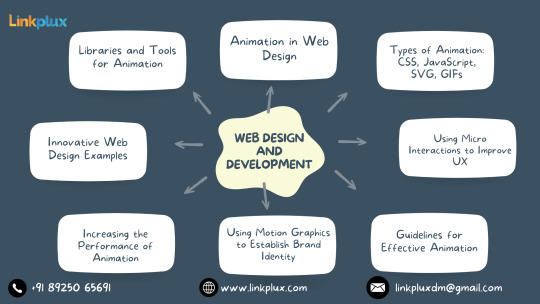
Innovative Web Design Examples
Innovative methods for enthralling users are demonstrated in creative web design examples. With their unique navigation and engaging multimedia experiences, these websites push the envelope and establish new benchmarks for design brilliance. Designers may broaden their skill set and keep on top of the ever-changing web design scene by taking inspiration from these examples.
Animation Tools and Libraries
Animation tools and libraries are essential resources for web designers aiming to create dynamic and engaging animations. These resources offer a variety of functionalities, from simple CSS animations to complex JavaScript animations. Popular libraries like GSAP and Anime.js provide pre-built animations and easy-to-use APIs, while design software such as Adobe After Effects allows for the creation of intricate animations. With these tools, designers can streamline their workflow, save time, and produce stunning animations that enhance the user experience.
Upcoming Developments in Web Animation
Future developments in online animation will change how users interact with new tools and methods of design. Among these are WebGL and WebGPU-enabled 3D animations for enhanced realism and depth. Smooth and easy browsing is provided by motion-based navigation and micro interactions. AI-powered animations promise tailored experiences that raise user interest. All things considered, web animation has a lot of potential to produce engaging, dynamic, and user-focused digital experiences.
0 notes
Text
The Significance of SEO-Friendly Mobile Optimization
Explaining Mobile-First Indexing
Explained: Google has started giving the mobile version of webpages priority when it comes to indexing and ranking. Google used to prefer desktop versions for this purpose, but with the increase in mobile internet usage, it is now more inclined towards mobile versions. This modification emphasizes how crucial it is to make websites mobile-friendly in order to preserve their appearance in search results.
Patterns of Mobile Device Use
Search engine optimization (SEO) and Digital Marketing techniques are significantly impacted by the striking rise in mobile usage, as evidenced by trends in mobile internet usage. The widespread use of tablets and smartphones over the last ten years has significantly changed how people use the internet and obtain information. The simplicity of use of mobile devices has made it possible for consumers to interact, shop, browse the internet, and watch media anytime, anywhere.

Due to this change in customer behavior, mobile traffic has significantly increased and is now more popular than desktop usage in many parts of the world. Because of this, search engines like Google have adjusted their algorithms to give precedence to websites that are mobile-friendly, realizing how important it is to meet the requirements and tastes of users who use mobile devices. In an increasingly mobile-centric digital market, it is imperative for organizations and website owners to comprehend and adjust to these developments in mobile usage.
Mobile optimization and user experience (UX)
To guarantee a seamless surfing experience on mobile devices, mobile optimization and user experience (UX) come together. It's important to provide quick loading times, readable content, and simple navigation in addition to aesthetics. User happiness and engagement are increased when mobile-friendly design features, such as readable fonts and obvious call-to-action buttons, are given priority. In the end, a satisfying mobile user experience boosts search engine optimization (SEO) results, client loyalty, and retention.
Ranking Factors for Mobile
Important components that affect a website's placement in mobile search results are known as mobile ranking factors. These include of usability on smaller screens, website loading speed, and responsiveness on mobile devices. A website's ability to rank higher in mobile search results increases when it is mobile-friendly, loads quickly, and offers a seamless user experience on mobile devices. This effectively meets the needs of mobile users.
The Repercussions of Neglecting Mobile Optimization
Neglecting mobile optimization might have detrimental effects on a website. Since mobile devices are used by the majority of consumers to access the internet, a poorly optimized website may have high bounce rates and little engagement. Furthermore, websites that are optimized for mobile devices are given priority by search engines; this means that websites that are not optimized may show up lower in Search Engine Optimization results. In a highly competitive digital market, a website's growth and profitability may eventually be hampered by a failure to adjust to mobile trends. In light of this, giving mobile optimization top priority is essential to being relevant and competitive in today's mobile-centric society.

Best Practices for Mobile SEO
The goal of mobile SEO best practices is to improve search engine visibility and user experience by making websites mobile-friendly. This entails putting responsive site design into practice, enhancing page speed, creating content that is mobile-friendly, and optimizing metadata. Regular mobile usability testing and structured data markup are also crucial. By implementing these strategies, companies can enhance their mobile search engine optimization efforts, resulting in higher organic traffic and search engine ranks.
Assessing Performance on Mobile
Tracking important metrics including mobile traffic, bounce rate, session duration, and conversion rates from mobile visitors is part of measuring mobile success. Mobile-specific problems like usability mistakes and page loading times can be found with the aid of tools like Google's Mobile Usability report and PageSpeed Insights. Optimization efforts to improve the mobile user experience, search engine rankings, and user satisfaction are guided by the analysis of these indicators.
Future Patterns and Things to Think About
In order to stay relevant, future trends and considerations in mobile optimization must foresee changes in user behavior and technological improvements. Voice search, PWAs, and augmented reality will all influence mobile browsing. Developing PWAs, voice search optimization, and AR experiences are all necessary to keep up with these developments. Furthermore, important considerations include the impact of 5G technology on browsing speed and mobile-first indexing. In the ever-changing digital market, businesses may drive engagement and conversions by offering state-of-the-art mobile experiences through staying educated and flexible.
1 note
·
View note
Text
How to Increase Your Reach with Content Syndication's SEO Benefits
Comprehending Content Syndication
For marketers and content producers looking to reach a wider audience, understanding content syndication is essential. It entails dispersing unique material on other channels in order to boost exposure and enhance traffic. While syndication is good for brand visibility and search engine optimization (SEO), it's important to pay attention to copyright and duplicate content concerns. Marketers can effectively use content syndication to improve their entire content marketing strategies by understanding its foundations.
Advantages of Content Syndication for SEO
For marketers looking to increase the visibility of their website on search engine results pages (SERPs), content syndication provides substantial search engine optimization (SEO) benefits. Marketers may increase their audience and reach by publishing their content across many platforms, which can result in useful backlinks from reputable websites. These backlinks increase the likelihood that the content will rank better in Digital Marketing by indicating to search engines how credible it is.

Moreover, more social signals from shares and comments are frequently generated by syndicated content, which increases its visibility and authority. Search engine penalties can be avoided by mitigating duplicate content issues through the use of canonical tags or making sure proper attribution is given. To sum up, content syndication is a powerful tactic for improving SEO performance since it increases content visibility on the web, generates backlinks, and expands reach.
Selecting Suitable Content for Syndication
To maximize the benefits of syndication, selecting the appropriate material is crucial. Marketers ought to give top priority to high-quality, timeless content that fits the interests of their target audience. High quality content increases engagement and resonance across platforms, while evergreen material guarantees continued relevance. Marketers may maximize their syndication efforts to reach a larger audience, build backlinks, and improve their entire content marketing strategy by concentrating on content that satisfies these requirements.
Platform Selection for Syndication
Making the right syndication platform choices is essential to maximizing the impact and reach of content. Platforms that fit their target demographic, content niche, and objectives should be the main emphasis of marketers. This means looking into trustworthy sites with interested users that are relevant to the content. Optimizing exposure is ensured by assessing indicators related to reach, authority, and engagement. Compatibility and compliance are further guaranteed by going over syndication regulations and content guidelines. Through tactical selection of syndication platforms, marketers may increase the visibility of their content, generate traffic, and accomplish their marketing goals.
SEO Optimization of Syndicated Content
Maximizing syndicated content's performance across platforms requires optimizing it for search engines. In order to include pertinent keywords and get hits, marketers should concentrate on components like headings, titles, and meta descriptions. Furthermore, internal linkages and appropriate formatting enhance readability and promote investigation. Search Engine Optimization (SEO) is improved and accessibility is increased when photos are optimized with descriptive alt text. For optimum impact and refinement, performance metrics like backlinks and organic traffic should be monitored.

Assessing Syndication Efficiency
It is essential to measure syndication performance in order to improve content distribution tactics. To measure audience reaction and the influence on brand visibility, marketers monitor measures such as website traffic, engagement, social shares, and backlinks resulting from syndicated material. Traffic quality may be evaluated by looking at key performance indicators (KPIs) including click-through and conversion rates. Through consistent performance evaluation and data analysis, marketers maximize the efficacy of their plans.
The Best Methods for Syndication Success
Crucial procedures are necessary for content syndication to succeed. Marketers need to select trustworthy partners and platforms that are in line with their target demographic, regularly provide excellent content, follow the right attribution requirements, and keep an eye on performance indicators. Building connections with collaborators and groups broadens the scope of collaboration. By using these strategies, syndication efforts are made more successful, audience engagement is increased, and content marketing objectives are met.
Upcoming Developments in SEO and Content Syndication
Future developments in content syndication and search engine optimization (SEO) are probably going to center on AI-driven personalization that is enhanced for voice search and user experience. Customizing content to each person's tastes and habits will increase engagement, and mobile-friendly, quick-loading websites will become essential for visibility. Search engine and social media integration will open up new channels for distribution. Marketers can effectively increase SEO and organic traffic through content syndication by adjusting to these trends.
1 note
·
View note
Text
Off-Page SEO Strategies That Will Increase Your Rankings
Off-Page SEO's Significance for Ranking
Because off-page SEO entails actions taken outside of your website that inform search engines of its legitimacy and authority, it is essential for ranking. Increasing the exposure and reputation of your website can be achieved through guest blogging, social media engagement, backlink building, and online community participation. Your site's worth is validated by these off-page initiatives, which also affect where it ranks in search results.
Creating Superior Backlinks
Creating backlinks of excellent quality is the foundation of an off-page SEO strategy. In essence, backlinks are endorsements from other websites to search engines, telling them that your material is reliable and important. When obtaining backlinks, a Digital Marketing business must priorities quality above number, though. Reputable and pertinent websites in your niche or sector provide high-quality backlinks.

Developing outstanding content that organically draws links, contacting influencers or websites for partnerships or guest blogging opportunities, and making sure your website is included in reliable directories and local listings are some strategies for constructing these kinds of backlinks. Setting a high priority for good-quality backlinks will help your search engine optimization efforts by increasing your website's reputation and trust with search engines and increasing the likelihood that it will rank higher in search results.
Using Social Media to Improve Off-Page SEO
It is essential to use social media for off-page SEO if you want to increase the authority and visibility of your website. It is possible to raise brand awareness and drive more traffic to your website by regularly posting high-quality material and interacting with your audience on social media sites like Facebook, Twitter, LinkedIn, and Instagram. By informing search engines about the popularity and relevancy of your website, social media interaction can also result in natural backlinks and raise its rating. Consequently, engaging in social media dialogues and optimizing your profiles are crucial elements of successful off-page SEO tactics.
Techniques for Guest Blogging to Get Backlinks and Visibility
A powerful technique for getting backlinks and increasing website traffic is guest posting. High-quality content contributions to respectable sites within your sector will help you build authority, draw in new readers, and obtain beneficial backlinks. To make the most of your guest articles, you must choose blogs with a large following and pertinent information. Putting more of an emphasis on offering insightful content than on blatant self-promotion builds credibility and trust with search engines and readers of the host blog. You may efficiently create backlinks, gain visibility, and fortify your internet presence by guest posting strategically.
Outreach to Influencers and Cooperation
Off-page SEO relies heavily on influencer outreach. You may increase the credibility and reach of your brand by collaborating with influential people in your sector. By working together on promotions or content, you can use their interested audience to increase traffic to your website. Select influencers who share your ideals and provide something of value in return for their endorsement. These collaborations may improve your website's Search Engine Optimization (SEO) performance by bringing about more exposure, brand recognition, and worthwhile backlinks.

Optimization of Directories and Local Listings
Businesses who want to improve their online presence and local search rankings must optimize their directories and local listings. Credibility and accessibility are increased when information is accurate and consistent across Yelp and Google My Business. Offering thorough company details and promoting favorable reviews are two aspects of listing optimization. Businesses may boost their chances of showing up in pertinent local searches and attract more organic traffic and potential customers to their storefronts by actively updating these listings.
Keeping an Eye on and Managing Your Online Image
In the digital age, maintaining a positive brand image for businesses requires careful monitoring and management of their online reputation. Businesses may show their dedication to customer satisfaction and promptly handle any negative comments by monitoring social media mentions, reviews, and discussions. Taking the effort to find positive reviews further builds trust and trustworthiness. By fostering customer trust, effective reputation management not only protects the brand's image but also promotes long-term success.
Examining the Backlink Profiles of Rivals
Examining rival backlink profiles provides insightful information about effective search engine optimization (SEO) tactics as well as areas for development. Businesses can evaluate the quality, quantity, and diversity of backlinks from competitors by utilizing tools such as Ahrefs or SEMrush. Their own backlink profiles are found to have gaps thanks to this research, which also helps to guide specific methods for obtaining high-quality backlinks from reputable websites. Utilizing competitor insights raises a website's visibility and authority, which eventually raises its search engine ranks.
0 notes
Text
Establishing trust and authority for higher ranks is the role of branding in SEO.
Overview of SEO Branding
Effective search engine optimization (SEO) tactics are built around branding, which goes beyond simple graphics to capture the spirit and values of a business. In search engine optimization, branding is essential for building authority and trustworthiness, both of which are necessary to rank higher in search results. In addition to helping a company stand out, a strong brand presence fosters customer loyalty and trust, which influences consumers' purchasing decisions and increases organic traffic. Businesses looking to increase their online exposure and long-term success must comprehend the importance of branding in SEO.
Establishing Credibility Is Crucial
It is impossible to exaggerate the significance of building credibility in SEO and Digital Marketing. In the plethora of alternatives and information available on the internet, customers tend to favor brands they believe to be dependable and trustworthy. Credibility informs search engines that a website has quality, reliable content, which might raise a website's position.

Furthermore, trustworthy firms typically garner a greater number of backlinks from reliable sources, which enhances their SEO endeavors. Beyond search engine rankings, reputation increases user trust, which in turn promotes interaction, return visits, and eventually conversions. Businesses can improve their search engine optimization (SEO) performance and establish their leadership positions in their respective industries by giving credibility top priority in their branding initiatives.
Developing SEO Authority
In highly competitive digital environments, establishing authority in SEO is essential to attaining top ranks and making an impression. It entails positioning a website as a reliable resource within its sector, which increases exposure and generates natural traffic. Developing excellent content, obtaining backlinks from reliable websites, and interacting with communities are crucial tactics. Brands may establish themselves as leaders in their area, draw in a devoted following, and improve their online visibility by continuously demonstrating their knowledge and dependability. Building authority continues to be crucial for search engine optimization (SEO) success, as search engines favor authoritative sites.
Techniques to Strengthen Your Brand's Credibility
Increasing brand reputation is essential for increasing consumer trust and optimizing Search Engine Optimization (SEO) results. One of the primary tactics is to continuously provide excellent content that aligns with the brand's knowledge and core values. Establishing authority and transparency is facilitated by active participation in pertinent online groups and social media platforms. Quick answers to queries and comments from clients show a dedication to their needs. Using user-generated material to support the brand, such testimonials, enhances its legitimacy. Through constant implementation of these techniques, brands can enhance their trust, resulting in better SEO outcomes and long-term success.
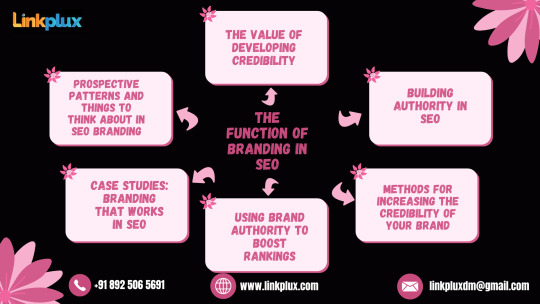
Using Brand Authority to Boost Rankings
Achieving higher search engine ranks requires utilizing brand authority. Improved visibility and organic traffic are the results of a strong brand presence, which communicates reliability to search engines. Creating high-quality content, obtaining backlinks, interacting with influencers, and optimizing website content are all important strategies. Brands can achieve long-term success by continuously securing top positions in search results through their demonstrated expertise.
Case Studies: Effective SEO Branding
Case studies of successful branding in SEO provide insightful information about practical tactics. They give examples of how companies have increased their authority, developed trust, and improved their search engine optimization. Through the presentation of cutting-edge techniques like social media interaction and content marketing, these studies encourage marketers to implement novel tactics that are customized to their objectives. One's own SEO efforts can be improved and informed by studying these success stories.
Upcoming Developments and Things to Think About in SEO Branding
Future branding trends and SEO (search engine optimization) considerations are changing quickly. Voice search, mobile optimization, and AI-powered personalized experiences are important areas of concentration. To remain visible, brands need to give priority to responsive design and optimize content for voice queries. Additionally, marketers must pay attention to the rise of visual search by optimizing their photos and videos. It will be essential to adjust to these trends in order to stay competitive in the ever-changing SEO market.
3 notes
·
View notes
Text
WordPress SEO: Crucial Plugins and Optimization Advice
Overview of SEO for WordPress
WordPress SEO entails using its user-friendly framework and plugins to optimize webpages for search engines. It covers techniques to improve on-page elements' visibility and ranks in search engine results by utilizing features like categories and tags. Acquiring a fundamental understanding of WordPress SEO is necessary to effectively drive organic traffic.
WordPress SEO: The Benefits and Importance
For website owners looking to increase their online presence and draw in organic visitors, WordPress SEO is essential. Businesses may boost search engine ranks and gain more exposure and brand recognition in the field of Digital Marketing by optimizing within the platform. Additionally, higher ranks increase reliability and credibility. Optimized content also draws in targeted traffic, which increases conversion rates and promotes business expansion. To put it briefly, WordPress SEO provides an effective means of optimizing one's online visibility and accomplishing goals related to digital marketing.
Selecting WordPress Plugins for SEO

Effective website optimization depends on choosing the best WordPress search engine optimization (SEO) plugins. Well-known solutions for content analysis and on-page optimization include Yoast SEO, All in One SEO Pack, and Rank Math. Assessing compatibility, update frequency, and reviews aids in choosing the finest option for particular SEO requirements. Website owners can increase search engine ranks and streamline optimization efforts by selecting appropriate search engine optimization (SEO) plugins.
Configuring the SEO Plugin
Optimizing your WordPress website requires configuring your SEO plugin. Set up preferences for keywords, site titles, and meta descriptions after installation. To improve SEO skills, you should also enable options for social media integration, breadcrumbs, and XML sitemaps. By making changes to your plugin, you can make sure that your website is search engine optimized, which will increase its exposure and rankings.
Content Optimization for Search Engines
To increase the visibility of your WordPress website in search results, content optimization is essential. To find terms that are relevant to your target audience, start by conducting keyword research. Throughout your material, including the titles, headings, and body text, organically incorporate these keywords. Make sure your material is valuable and of the highest caliber to meet the needs of your audience. Give search engines some context by using alt text and meta descriptions. You may accomplish your digital marketing objectives, increase visibility, and draw in organic traffic by continuously improving your content.
WordPress Technical SEO
Your WordPress website will be search engine optimized thanks to technical SEO. Enhancing crawlability, indexation, and site performance are all part of it. Structural optimization of the website, faster loading times, and mobile responsiveness are among the tasks. Furthermore, optimizing XML sitemaps, controlling redirects, and setting up permalinks are crucial. You may improve your website's Search Engine Optimization (SEO) performance and visibility in search engine rankings, resulting in an increase in organic traffic, by taking care of certain technical aspects.
Making the Most of WordPress Features for SEO
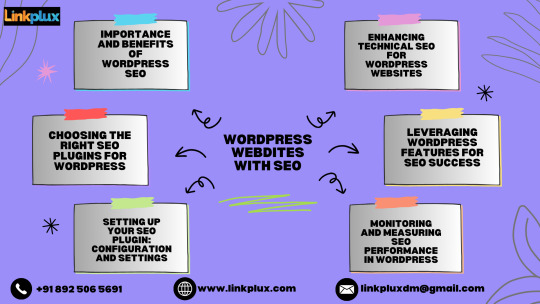
WordPress offers useful elements that improve SEO. To better organize content and increase relevancy, make use of categories, tags, and internal linking. Additionally, use WordPress's editor to optimize content with appropriate formatting and meta data. You may increase your website's organic traffic and search engine visibility by strategically utilizing these capabilities.
Tracking the Performance of SEO
Monitoring the SEO performance of your website on a regular basis is essential for assessing optimization efforts and pinpointing areas in need of development. Metrics like organic traffic and keyword rankings can be tracked with the use of tools like Google Analytics and Search Console. Search engine optimization (SEO) strategy can be refined and visibility in search engine results can be increased by making data-driven decisions based on the analysis of these indicators, which offer insights into performance patterns and user behavior.
Advanced Methods for SEO
These techniques go above and beyond the norm to increase a website's visibility and search engine rankings. These consist of technological improvements for better crawlability, sophisticated content optimization techniques, and advanced keyword research. Furthermore, sophisticated link-building techniques can raise the authority of a website. By putting these strategies into practice, one can keep a competitive edge and achieve improved SEO results.
WordPress SEO Best Practices
Use fundamental SEO techniques to increase the visibility of your WordPress website. Select a dependable SEO plugin and set it up to achieve your objectives. Make careful keyword research and carefully consider how to include terms into your writing. Prioritize producing interesting and high-quality content while maximizing technical elements like mobile friendliness and site speed. Use internal linking, categories, and tags to efficiently organize content. Utilize search engine optimization (SEO) tools such as Google Analytics to track metrics and make necessary modifications. By using these techniques, search engine visibility is improved and organic traffic is drawn in.
1 note
·
View note
Text
Comprehending the Fundamentals of On-Page SEO
Overview of On-Page SEO
The foundation of digital marketing is on-page SEO, which focuses on improving individual web pages to appear higher in search engine rankings. It entails fine-tuning website components, such as content and meta tags, to precisely represent relevancy to search queries. Good on-page SEO increases a website's exposure, improves user experience, and increases organic traffic.
Why On-Page Optimization Is Important
An effective search engine optimization (SEO) strategy for a website depends heavily on on-page optimization. Businesses in the Digital Marketing sector can greatly increase their search engine exposure and ranks by carefully optimizing on-page features like meta tags, content, and internal linking structures. In addition to improving its chances of ranking highly in search engine results, a well-optimized website offers a better user experience, which in turn increases engagement and conversion rates.

Furthermore, on-page optimization makes it easier for search engines to index and rank the website appropriately by guaranteeing that they can comprehend the relevance and substance of each page. To put it simply, putting on-page SEO first creates the conditions for a website to succeed online, assisting companies in drawing in targeted visitors and accomplishing their goals for digital marketing.
Researching Keywords Effectively
For Search Engine Optimization (SEO) to be successful, keyword research is crucial since it enables companies to comprehend user search intent and modify content appropriately. Businesses may optimize their content to rank higher in search engine results and draw in targeted traffic by analyzing relevant terms and phrases. When conducting effective keyword research, one must take into account variables such as searcher intent, competition, and relevance in order to guide content creation and optimization efforts and, in the end, produce measurable outcomes for digital marketing initiatives.
Making Content That Is SEO-Friendly
Creating content that is optimized for search engines optimization(SEO) is essential to improving the visibility of websites and drawing in natural visitors. It entails creating interesting, high-quality content that strategically uses pertinent keywords and corresponds with the interests of the audience. Easy to read, properly organized, and search engine optimized content is essential. Businesses can build authority and credibility by responding to frequently asked questions and offering insightful information. This increases organic traffic and search engine rankings.
Improving the User Experience
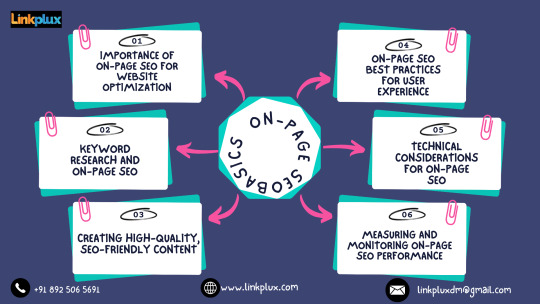
Enhancing the user experience (UX) is essential to the success of websites. It entails streamlining loading times, improving navigation, and making mobile friendly. Intuitive design and clear information lower bounce rates while raising engagement. Chatbots and other interactive features improve user connection and communication. Setting UX as a top priority increases client loyalty, retention, and conversion rates.
Technical Considerations for On-Page SEO
For search engine visibility and website performance, technical on-page SEO is essential. It entails using HTTPS security, enhancing website speed, and optimizing for mobile responsiveness. Additionally essential are proper indexing and crawlability via robot.txt files and XML sitemaps. Businesses may improve both the user experience and search engine rankings of their websites by taking care of these technological aspects.
Monitoring On-Page SEO Results
To assess optimization efforts and make wise judgments, tracking on-page SEO performance is essential. Metrics like organic traffic, keyword rankings, and user interaction may be tracked with the aid of tools like Google Analytics and Search Console. These metrics' analysis identifies patterns, points out areas that need work, and directs the development of new strategies. In addition, performance tracking helps with popular content identification, user behavior analysis, and conversion route optimization. Through performance analysis, organizations can gain valuable insights to improve their on-page SEO efforts over time.
Crucial Tools for On-Page SEO
Proper tool selection is essential for successful on-page SEO. SEMrush, Ahrefs, and Moz are a few examples of tools that help with competitive analysis and keyword research. Yoast SEO and Surfer SEO are two content optimization tools that provide useful information for improving the quality and relevancy of content. Screaming Frog and Google's Page Speed Insights are examples of technical SEO tools that can be used to find crawlability, speed, and mobile responsiveness problems. By using these crucial tools, optimization efforts can be streamlined, performance can be tracked, and search engine rankings and user experiences can be enhanced.
In conclusion, success in digital marketing depends on having a solid understanding of on-page SEO. Through the optimization of essential components such as meta tags and content, companies can improve their search engine ranking and draw in relevant traffic. Technical optimization, content production, and thorough keyword research are all crucial, and performance monitoring with the right tools enables ongoing development. Businesses may achieve their digital marketing objectives and build a strong online presence by mastering the principles of on-page SEO.
1 note
·
View note
Text
Repurposing Existing Content for SEO: Using It to Boost Rankings
An Overview of Repurposing Content
Content is king in the digital world, but producing new content on a regular basis can take a lot of time and resources. This is when reusing content becomes relevant. Repurposing old content entails changing its format or repackaging it to make it more accessible to new audiences and prolong its shelf life. By repurposing your existing content assets, you may increase their value instead of beginning from scratch every time. Content repurposing is an affordable means to improve your content strategy and increase your search engine optimization efforts. It can involve converting blog entries into podcasts, films, infographics, or guides, or gathering pre-existing content into full guides or eBooks.
Advantages of SEO
Repurposing material can save time and resources while also offering significant benefits for Digital Marketing and SEO. Repurposing your content into new formats and distributing it across a range of media can increase its visibility and reach. By targeting different long-tail keywords and phrases, repurposing also improves your website's organic search exposure.

Additionally, carefully repurposing material can increase social media shares and backlinks, two important search engine ranking variables. In general, content repurposing boosts the effectiveness of your search engine optimization (SEO) campaigns by boosting the authority of your website in search engine results pages, boosting traffic, and improving content relevancy.
Evaluating Your Content
Doing a comprehensive inventory of your current material is crucial before you begin reusing it. Start by classifying your material according to performance metrics, audience fit, and relevancy to your current objectives and target audience. Determine the best-performing articles, timeless material, and subjects that could be explored further. To determine the level of interest in your audience, pay attention to engagement indicators like time on page, social shares, and page views. Through a thorough assessment of your content library, you may identify potential repurposing opportunities and efficiently allocate resources to optimize impact and relevance.
Identifying Possibilities
Finding possible repurposing options is the next step after evaluating your content collection. Seek for content that can be built upon to cover relevant topics in greater detail or that works well across a variety of forms. Think about the formats that best suit your content objectives and connect with your target audience. Analyze audience questions, comments, and feedback as well to identify areas that require more research or explanation.
Adapting Techniques
Repurposing content entails changing its format to increase its visibility in search results and appeal to a wider audience. Written content can be transformed into infographics or other visual representations, or it can be adapted for new media like podcasts or videos. Compiling relevant materials into a comprehensive resource is another function of roundup posts and content compilations. Maintaining the relevance of evergreen material requires regular updates. You may efficiently cater to a wide range of audience tastes, optimize your content for several platforms, and extend its longevity by implementing these tactics.
Techniques for SEO Optimization
Using efficient Search Engine Optimization(SEO) strategies is essential when repurposing material. To target suitable terms, start by conducting keyword research. Use keywords to enhance headers, meta descriptions, and titles. To increase authority, deliberately use both internal and external linkages. Incorporate descriptive text to maximize multimedia features as well. You may increase the exposure of your content and draw in organic traffic by implementing these strategies.
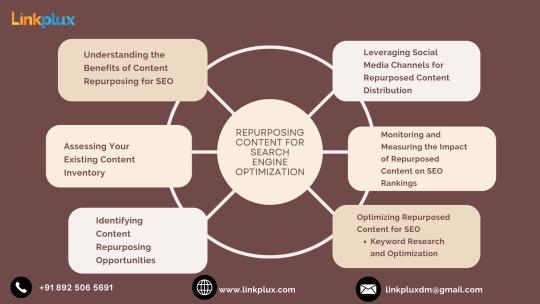
Distribution on Social Media
Make thoughtful use of social media channels to increase the visibility of recycled material. Find and target platforms that are popular with your audience. Create enticing images and captions to promote interaction. Posts should be timed for maximum visibility, and material should be modified to suit the particulars of each platform. You may increase the reach of reused material and increase traffic to your website by strategically distributing it on social media.
Tracking Outcomes
Monitor data for repurposed material such as website traffic, engagement, and conversions on a constant basis. Analyze audience behavior using analytics tools, then modify your strategy accordingly. To assess performance, keep an eye on social media analytics, backlinks, and search engine rankings. You can improve tactics and future content efforts by analyzing results on a regular basis and applying data-driven insights.
By optimizing already-existing content assets, content repurposing is a powerful strategy for improving search engine optimization (SEO) performance. By means of methodical repurposing and optimization, it is possible to increase visibility, draw in fresh audiences, and enhance search engine results. Ongoing success is ensured by keeping an eye on outcomes and modifying tactics in response to new information. Accept content repurposing to maximize the value of your material and improve search engine optimization (SEO) campaigns.
2 notes
·
View notes
Text
Modern SEO Strategies' Dependency on Link Building
Fundamentals of Establishing Links
The principles of link building include the basic tactics used to obtain links pointing to your website from other websites. Link building's primary goal in the digital sphere is to develop authority and credibility. It entails the procedure of obtaining links from reliable sites that are pertinent to the subject matter and business of your website. Both visitors and search engine crawlers can navigate and find your website through these links. In general, your site will likely rank higher in search engine results pages (SERPs) the more relevant and high-quality connections it has pointing to it.
Rankings and Backlinks
A website's position in search engine rankings is largely determined by its backlink profile. Backlinks are essentially seen by search engines as endorsements from other websites. Search engines view websites or Digital Marketing Agency as more authoritative and reliable the more relevant and high-quality backlinks they have. As a result, websites are more likely to rank higher in search results if they have a robust backlink profile.
But not every backlink is made equal; quality is very important. When it comes to rankings, backlinks from reputable and authoritative websites are more significant and carry more weight than connections from irrelevant or low-quality sources. As a result, expanding your portfolio of high-quality backlinks is essential to raising your website's search engine ranks and increasing natural traffic.
Superior Quality Compared to Quantity

In connection building, quality is more important than quantity. It is more important to get backlinks from reliable, trustworthy, and pertinent sources than it is to have a huge amount of them. Search engines view these high-quality backlinks as credible signals, which raises the rankings of your website. Concentrating only on quantity can damage your website's visibility and result in fines. Setting quality over quantity is essential if you want to develop a solid and long-lasting link profile that supports your SEO efforts.
Links as Indices of Credibility
In search engine optimization (SEO), links are essential markers of trust. Reputable websites that link to your material support its legitimacy and applicability, telling search engines that your website is an important source of information. Higher rankings in search results are a result of this. You can build trust with people and search engines by obtaining high-quality inbound links from reputable sites. This will increase your visibility and organic traffic.
The Development of Link Construction
The emphasis on number has given way to quality in the growth of link building. Initially, the focus of techniques was on building as many links as possible using reciprocal linking and directories. But these days, natural, high-quality backlinks obtained from insightful content and sincere connections are given priority by search engines. A comprehensive strategy that incorporates public relations, content marketing, and Search Engine Optimization (SEO) and places a strong emphasis on user experience, authority, and relevancy is needed for modern link development. This illustrates a shift toward moral and environmentally friendly methods meant to give customers actual value.
Strategies for Internal Linking
Internal linking techniques entail creating links between pages on your website to facilitate user experience and improve navigation. Building an internal link network will aid search engine crawlers in comprehending the structure of your website and assist consumers in finding pertinent material. Using descriptive anchor text, giving priority to pertinent connections, and routinely evaluating and upgrading links are examples of effective tactics. Strong internal linking can boost Search Engine Optimization, increase traffic to important pages, and improve website usability.
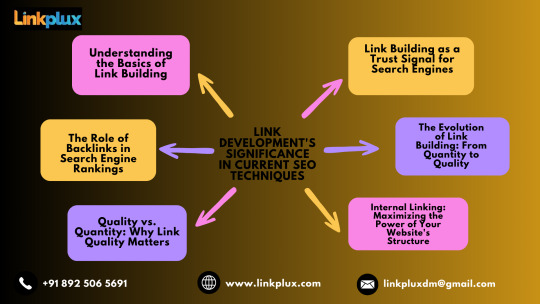
The Effect of External Links
The authority and search engine optimization (SEO) of a website are greatly impacted by outbound links. You establish credibility and give users something of value when you connect to reliable sources. Additionally, outbound links can improve visibility and build partnerships. But it's important to strike a balance when it comes to incoming connections. In general, thoughtful outbound linking enhances SEO efforts by positioning your website as a useful resource.
Calculating Achievement
It is essential to measure SEO accomplishment in order to comprehend efficacy and make wise selections. Important performance indicators include organic traffic, keyword ranks, and conversion rates. Data gathering and analysis are made easier by tools like Google Analytics and Search Console, which allow for optimization based on data. Maintaining success in organic search requires regular monitoring and analysis in order to adjust techniques to changing conditions.
In conclusion, link building is still essential to contemporary SEO tactics since it raises the visibility, authority, and ranks of websites. Long-term success requires embracing ethical standards and placing an emphasis on quality rather than quantity. Link building tactics must be adjusted to prioritize relevance and authority as search engines change. Online success mostly depends on comprehending the importance of link building and effectively incorporating it into search engine optimization (SEO) initiatives.
3 notes
·
View notes
Text
A Comprehensive Overview of Google's Algorithm Updates and Their Effect on SEO
Overview of Google Algorithm Changes
Changes to Google's algorithm have a significant impact on the order in which websites appear on search engine results pages (SERPs). Google's search algorithm is constantly being improved by these improvements to give users a better experience and deliver more relevant results. Since these adjustments have a direct impact on website traffic and exposure, it is imperative that SEO specialists and website owners understand them. Businesses can efficiently modify their SEO tactics and preserve their competitiveness in the digital marketplace by being educated.
Evolution and Significance
Google's algorithm's development is a reflection of the ever-changing Digital Marketing environment, where search engines compete to provide users with the most useful and relevant material. Google has improved its algorithms throughout time to give weight to elements like user experience, relevance, and high-quality content. This development emphasizes how crucial it is for website owners and SEO professionals to remain up to date on algorithm modifications.

Maintaining or raising search engine ranks, organic traffic, and general online exposure require responding to these changes. Businesses should proactively modify their SEO tactics and maintain an advantage in the cutthroat digital landscape by realizing the impact of algorithm modifications.
Overview of Major Updates
The Panda, Penguin, and Hummingbird algorithm modifications by Google represent dramatic changes in the way websites are assessed and ranked in search results. Specific elements of user experience and website quality, like link quality and content relevancy, are the focus of each update. It is essential for website owners and search engine optimization(SEO) specialists to stay up to date on these adjustments so they may modify their techniques appropriately, complying with Google's guidelines and preserving or raising search ranks.
Effect on Search Engine Results
Updates to Google's algorithm have a big impact on search engine results pages (SERPs), changing the appearance and ranking of websites. Visibility and traffic fluctuations may result from these upgrades, particularly for sites impacted by modifications to user experience standards or content relevancy. Businesses must adjust to these changes if they hope to keep or improve their search rankings and successfully satisfy changing customer needs.
Reasons for Updates
Google modifies its algorithm based on a number of parameters that are intended to improve the quality of search results. These include improvements in technology, modifications to user behavior, and initiatives to stop spam. Updates emphasize user experience, relevancy, and high-quality material as a way to show Google's dedication to reliable information delivery. Knowing these elements enables Search Engine Optimization(SEO) experts and website owners to modify their tactics in order to comply with Google's requirements.
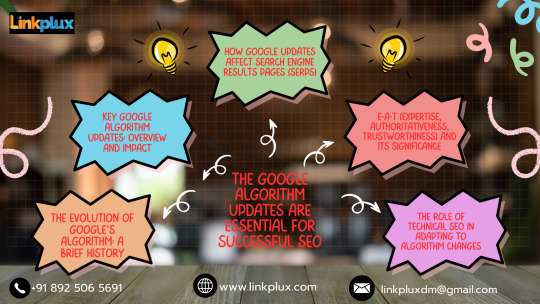
Responding and Modifying
Maintaining or improving search ranks in SEO requires prompt responses to Google algorithm changes as well as successful adaptability. Owners of websites and search engine optimization(SEO) specialists need to quickly evaluate how the modifications will affect their site's functionality and make the required changes. This can entail reevaluating link-building tactics, fine-tuning content methods, or optimizing technical components. Businesses may reduce negative effects, grab new possibilities, and stay competitive in the ever-changing digital space by remaining adaptable and proactive.
Quality of Content and E-A-T
Expertise, Authoritativeness, and Trustworthiness, or E-A-T, are critical components in Google's content quality assessment. Websites that exhibit proficiency, legitimacy, and dependability typically have a higher search engine ranking. As a result, companies must place a strong priority on producing excellent content that complies with the E-A-T guidelines. This entails demonstrating competence by thoroughly researched content, building authority through the citation of reliable sources, and upholding credibility through correct information. Businesses can enhance their SEO performance and establish credibility with their audience by prioritizing E-A-T and content quality.
Technical SEO Pointers
Optimizing a website's search engine performance requires technical SEO. It covers things like mobile friendliness, structured data markup, site architecture, and speed of the website. Giving technical SEO top priority guarantees improved user experience and exposure. Key practices include regular audits, mobile-friendly design, structured data markup, and website speed optimization. Businesses may boost search engine rankings and the functionality of their websites by taking these factors into account.
It's essential to comprehend Google algorithm changes and how they affect search engine optimization(SEO) if you want to maintain your competitiveness in the online market. Optimizing tactics to conform to Google's constantly changing guidelines guarantees improved search rankings, organic traffic, and an enhanced online presence. Through an emphasis on elements such as user experience, relevancy, technological optimization, and content quality, organizations can stay competitive in search results and skillfully maneuver around algorithm changes. In conclusion, the secret to long-term success in the digital sphere is staying up to date on algorithm changes and modifying SEO techniques appropriately.
1 note
·
View note
Text
Breaking Down Technical SEO: Crucial Advice for Optimizing Website Performance
Technical SEO Fundamentals
Enhancing a website's exposure and performance on search engines requires a solid understanding of technical SEO principles. To guarantee effective crawling and indexing, it entails optimizing technical elements such as mobile friendliness, structured data markup, and website speed. XML sitemap creation, URL optimization, and handling duplicate material are among the tasks. Website owners may build a solid foundation for enhanced user experience and search engine rankings by grasping these fundamentals.
Optimization of Website Speed
In Digital Marketing, improving website performance is essential for improving user experience and search engine rankings. Users expect websites to load quickly in today's fast-paced digital environment, and search engines give preference to sites that load rapidly in their rankings. Pages that load slowly may have increased bounce rates, reduced user engagement, and lowered conversion rates.

Many strategies, including minimizing HTTP requests, optimizing pictures, taking advantage of browser caching, cutting down on server response time, and minimizing code bloat, can be used to maximize website speed. Website performance can also be increased by employing content delivery networks (CDNs) and selecting reputable hosting companies. Businesses may give their visitors a flawless online experience and increase their exposure and ranking potential in search engine results by giving website performance optimization first priority.
Design Friendly for Mobile
In today's digital landscape, when more people are accessing the internet through mobile devices, mobile-friendly design is imperative. It entails optimizing text size and spacing, streamlining navigation menus, reducing page load times, and developing responsive web designs that adjust fluidly to various screen sizes and resolutions. Businesses may efficiently interact with their mobile audience, lower bounce rates, enhance overall website performance, and increase search engine optimization visibility by giving priority to mobile-friendly design.
Markup for Structured Data
Because structured data markup gives search engines insight about a website's content, it improves that website's visibility in search results. Rich snippets, such as star ratings and event details, can now be shown immediately in search results thanks to this markup. Website owners can increase their site's likelihood of ranking well in search engine results pages and drawing in more focused traffic by integrating structured data markup utilizing standards like Schema.org and JSON-LD.
Sitemaps in XML
XML sitemaps, which detail every page on a website along with metadata like change dates and priority levels, serve as guides for search engine crawlers. Website owners can guarantee effective indexing and enhanced visibility in search results by supplying these sitemaps. They also assist in locating and fixing crawl issues and provide control over how search engines interact with the website. In the end, Search Engine Optimization (SEO) is made possible by XML sitemaps, which help with improved indexing and ranking among search engines.
Optimization of Website Architecture

Optimizing a website's architecture to enhance user experience and search engine exposure is known as website architectural optimization. It entails rational content organization, user-friendly navigation, and reducing the number of clicks required to reach key sites. Businesses may improve user engagement, lower bounce rates, raise search engine rankings, and ultimately increase organic traffic to their website by optimizing the architecture of their websites.
SSL and HTTPS
Secure connection between a user's browser and a website is ensured by the HTTPS and SSL protocols, which encrypt sensitive data and shield it from interception. HTTPS and SSL not only increase security but also boost search engine rankings. Secure websites are given priority by Google and other search engines, which raises their rating. Thus, using HTTPS and SSL improves credibility and confidence while safeguarding user data, which improves website performance and search visibility.
Optimization of URL Structure
URL structure optimization is the process of creating concise, educational, and user-friendly URLs that are optimized for search engines. It means using keywords, staying away from pointless discussions, and keeping legible URLs. Optimized URL architecture improves website usability, organic traffic, and search engine presence.
In conclusion, improving website presence and drawing in organic traffic require a solid understanding of technical Search Engine Optimization (SEO). Effective Search Engine Optimization (SEO) tactics start with putting fundamental advice like ensuring mobile friendliness, optimizing website speed, employing structured data markup, and enhancing URL structures into practice. Businesses may secure long-term success in the digital sphere by adopting technical SEO to improve user experiences and search engine rankings.
1 note
·
View note
Text
SEO with UX: Building Engaging and Adaptable Websites
Understanding the Relationship between UX and SEO
In the domain of website development, User Experience (UX) and Search Engine Optimization (SEO) are closely intertwined disciplines. Both aim to provide users with a seamless browsing experience and relevant content. UX is dedicated to meeting user needs and expectations, ensuring effortless navigation and engagement. Conversely, SEO focuses on enhancing website visibility and accessibility to search engines, aiming for top rankings in search results and attracting organic traffic. This symbiotic relationship is fundamental in website development and is often overseen by a reputable Digital Marketing Agency.
UX Elements Impacting SEO

Crucial UX elements significantly influence SEO outcomes. Mobile responsiveness, prioritized by Google for mobile-friendly sites, ensures seamless browsing across devices, improving user satisfaction and SEO rankings. Additionally, website speed directly affects user engagement and SEO metrics, such as bounce rates and dwell time. Intuitive navigation and structured content further enhance user experience, reducing bounce rates and signaling relevance to search engines. High-quality content, optimized for relevance and keywords, attracts backlinks and social shares, enhancing search visibility. Engaging visual design elements also contribute positively to user engagement and SEO metrics.
Mobile Responsiveness & SEO
Mobile responsiveness is critical for contemporary websites, given Google’s preference for mobile-friendly sites in search rankings. A mobile-friendly design guarantees optimal viewing experiences across various screen sizes, fostering user satisfaction and engagement—critical factors for SEO success. Prioritizing mobile responsiveness consequently enhances SEO performance, resulting in increased visibility and organic traffic.
Website Speed’s Impact on User Satisfaction and SEO
Website speed significantly affects both user experience and SEO effectiveness. Users expect fast-loading sites, and search engines reward them with higher rankings. Slow websites frustrate users, increasing bounce rates and decreasing engagement, negatively affecting SEO metrics. By optimizing website speed through techniques like image compression and file magnification, website owners improve user experience and SEO performance, leading to increased visibility and organic traffic.
Navigation & Site Structure for SEO Success
Efficient website navigation and structure are essential for enhancing user experience and Search Engine Optimization(SEO) performance. Clear navigation aids users in finding information easily, reducing bounce rates and improving engagement. From an SEO standpoint, a well-organized site facilitates search engine crawlers in indexing content effectively, enhancing visibility in search results. Prioritizing intuitive navigation and structured content thus benefits both user experience and SEO, resulting in a seamless browsing experience and improved search engine rankings.
Balancing Content Quality for UX and SEO
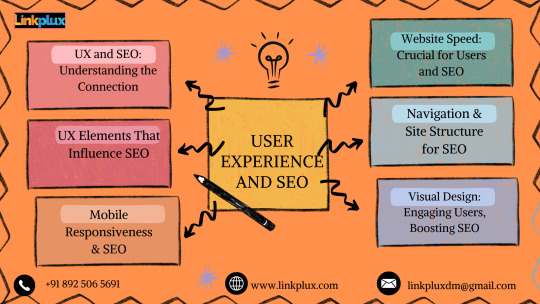
Achieving a balance between content quality for user experience (UX) and Search Engine Optimization (SEO) is crucial for website success. High-quality content engages users and satisfies search algorithms, improving rankings and visibility. Relevant and valuable content meets user needs and encourages interaction, enhancing UX. Meanwhile, well-optimized content signals authority to search engines, improving rankings. Striking this balance ensures informative, engaging, and optimized content, leading to a positive user experience and robust SEO performance, driving organic traffic and overall success.
Enhancing SEO through Visual Design
Visual design plays a significant role in user engagement and SEO. Appealing layouts and multimedia content foster user engagement, signaling relevance to search engines. Additionally, well-designed visuals aid in conveying information effectively, improving content comprehension. Prioritizing visually appealing elements enhances user experience while boosting search engine visibility and rankings.
Insights from User Interaction Metrics for SEO
User interaction metrics provide valuable insights for SEO optimization. Metrics like bounce rate, dwell time, and pages per session reflect user engagement levels. Low bounce rates and high dwell times indicate valuable content, benefiting SEO. Similarly, more pages per session indicate deeper user engagement. Analyzing these metrics helps optimize content and user experience, leading to enhanced SEO performance and increased visibility in search results.
In conclusion, integrating user experience (UX) with search engine optimization (SEO) is essential for website success. Prioritizing elements like intuitive navigation, fast loading times, quality content, and engaging design not only improves user satisfaction but also boosts SEO performance. This synergistic approach leads to improved visibility, higher rankings, and increased organic traffic, ensuring long-term online success.
2 notes
·
View notes
Text
The Influence of Artificial Intelligence on SEO: Tracking Trends
AI’s Influence on Search Engines
In the realm of digital marketing, the convergence of Search Engine Optimization (SEO) and Artificial Intelligence (AI) signifies a significant paradigm shift. As AI reshapes various industries, its impact on SEO strategies cannot be underestimated. This article delves into the evolving SEO landscape amidst the rise of AI, highlighting key trends and offering strategies for businesses to maintain competitiveness in this dynamic environment.
AI’s Impact on SEO in Digital Marketing Agencies
Artificial Intelligence (AI) is revolutionizing search engine optimization (SEO), introducing new trends and challenges for businesses in the Digital Marketing Agency domain. Staying updated with these advancements is crucial for maintaining competitiveness in the digital market. This article explores AI’s influence on SEO and provides strategies for navigating these changing trends.
Enhancing Search Engine Functionality through AI

AI has significantly transformed search engines by comprehending user queries and delivering personalized results. Algorithms like Google’s Rank Brain analyze user behavior and preferences, enhancing the relevance and user experience of search results in digital marketing. AI’s continual evolution, driven by machine learning and natural language processing, continues to shape how people access information online.
AI-Powered Algorithms Shaping Search Rankings
AI-powered algorithms now heavily influence search rankings, ushering in a new era of relevance and user satisfaction. Algorithms such as Google’s Rank Brain utilize machine learning techniques to assess various factors when analyzing web pages. Unlike traditional ranking systems, AI algorithms continuously refine their understanding of search queries and content relevance, enhancing the accuracy and usefulness of search results.
Leveraging Machine Learning for Content Optimization
Machine learning has revolutionized content optimization, empowering marketers to create more targeted and engaging content. By analyzing extensive datasets, machine learning algorithms offer insights into audience preferences and behaviors, aiding in Search Engine Optimization (SEO). This enables marketers to tailor content strategies effectively, ensuring relevance and driving desired outcomes.
AI Tools and Technologies for SEO Professionals
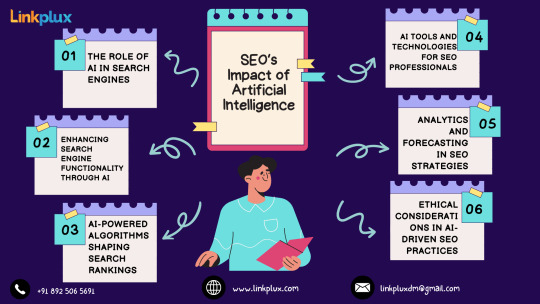
AI tools have become indispensable for SEO professionals, providing advanced capabilities to streamline optimization efforts. They use natural language processing and machine learning to analyze data and provide useful insights for competitor analysis, content optimization, and keyword research. These systems also automate monotonous activities, giving professionals time for more strategic endeavors. AI tools are continuously evolving to meet the shifting needs of the SEO industry.
Ethical Considerations in AI-Driven SEO Practices
Ethical considerations in AI-driven search engine optimization (SEO) are essential for maintaining integrity and trust. Transparency in data usage and avoidance of deceptive practices are vital as AI progresses. Prioritizing valuable content over algorithm manipulation ensures a positive user experience, fostering long-term success and credibility in SEO strategies. Upholding ethical standards and prioritizing user requirements are essential for achieving sustainable success in SEO.
Implications of AI’s Evolution on SEO
AI’s evolution reshapes SEO, emphasizing user-centric content and relevance. Advanced algorithms prioritize user intent, requiring adaptive SEO strategies. Technologies like natural language processing improve query understanding, while emerging ranking factors may arise with AI advancements. SEO professionals must innovate and stay updated to effectively navigate these changes.
In conclusion, AI’s impact on SEO is profound, reshaping digital marketing and search strategies. Staying ahead in this dynamic landscape is vital for maintaining visibility and relevance online. By embracing AI, understanding its implications, and adapting strategies, businesses can thrive in the competitive digital marketplace, fostering innovation in the evolving digital realm.
1 note
·
View note
Text
The Future of Social Media: Emerging Trends to Stay Ahead of the Curve
video dominance
Video content has emerged as the preferred format for social media users, offering a dynamic and immersive experience that captures attention effectively. Platforms such as TikTok and Instagram Reels have propelled short-form video content into the spotlight, encouraging creativity and authenticity among users and brands alike. Live streaming has also gained traction, providing real-time interaction and fostering deeper connections with audiences.
As consumption habits continue to shift towards video, businesses must adapt their Digital Marketing strategies to prioritize video production and distribution, leveraging its power to drive engagement, increase brand visibility, and ultimately, achieve marketing objectives in the competitive social media landscape.
Augmented Reality Experiences

Augmented Reality (AR) is revolutionizing social media by blending digital elements with the real world, creating immersive and interactive experiences for users. AR filters and effects on platforms like Instagram and Snapchat allow users to enhance their photos and videos with virtual overlays, animations, and interactive elements in real-time. Brands are leveraging AR to engage with their audiences in innovative ways, from virtual try-on experiences for products to interactive games and branded filters.
As AR technology continues to evolve and become more accessible, it presents exciting opportunities for brands to captivate and connect with consumers in unique and memorable ways, driving engagement and fostering brand loyalty in the digital realm.
Virtual Reality's Influence
Virtual Reality (VR) is reshaping social media by offering immersive, 3D experiences that transport users to virtual environments. While still in its early stages, VR has the potential to revolutionize how people interact and engage on social platforms.
From virtual meetups and events to immersive storytelling and gaming experiences, VR opens up new avenues for creativity and community building. Although adoption remains limited compared to other technologies, advancements in VR hardware and software are making it more accessible and compelling for users and brands alike. As VR continues to evolve, its influence on social media is expected to grow, offering exciting opportunities for immersive engagement and brand experiences in the digital realm.
Conversation Marketing
Conversational marketing prioritizes real-time, personalized interactions through messaging platforms and chatbots. It leverages automation and AI to scale personalized engagement, providing immediate assistance and relevant recommendations. By fostering two-way communication and delivering timely responses, conversational marketing enhances customer experience, drives engagement, and boosts conversions for businesses in the digital realm.0
Social Commerce Integration
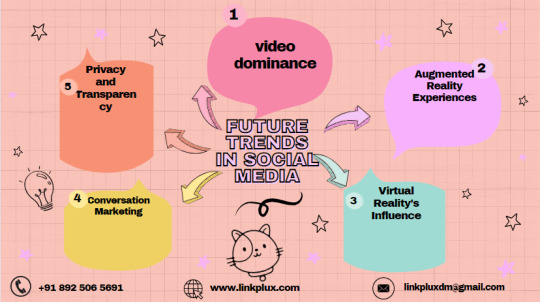
Social commerce integrates e-commerce features seamlessly into social media platforms, enabling users to discover and purchase products within their feeds. Leveraging platforms like Facebook and Instagram, it streamlines the shopping experience and drives sales through features like shoppable posts and in-app checkout. As social commerce evolves, businesses must prioritize integration to capitalize on impulse buying behavior and stay competitive online.
Privacy and Transparency
Privacy and transparency are key pillars of ethical social media practices. They entail clear communication and respect for user data, ensuring individuals have control over their information and understand how it's used. Upholding these principles builds trust with users and enhances brand reputation. Adhering to stringent privacy regulations and providing transparent policies on data collection and usage are essential for fostering a positive user experience and maintaining credibility in the digital sphere.
Micro-influencers and Niche Communities
Micro-influencers and niche communities offer targeted engagement opportunities for brands. With smaller but highly engaged followings, they provide authentic connections within specific demographics. Collaborating with micro-influencers enables access to niche audiences, while engaging with niche communities fosters deeper relationships and authentic recommendations, enhancing brand reach and credibility.
Personalization in Marketing
Personalization tailors content and experiences to individual preferences, driving engagement and conversions. By analyzing data, brands deliver targeted messages and recommendations, fostering loyalty and maximizing ROI. Embracing personalization is essential in today's competitive landscape to stand out and deliver value to consumers.
Social media's future holds exciting trends and technologies for brands. From video dominance to AR and VR, engagement possibilities abound. Conversational marketing, social commerce, and micro-influencers emphasize personalized interactions. Prioritizing privacy and transparency builds trust. To thrive, businesses must personalize, adapt, and stay consumer-centric. By doing so, brands can seize success in the ever-evolving social media landscape.
0 notes
Text
Are You Ready to Begin Your Journey into Web Design? Web Design Beginner Guide

1. Grasping the Basics
Before you dive into crafting visually appealing websites, it’s crucial to have a solid understanding of the foundational elements:
HTML (Hypertext Markup Language): This forms the core of web pages, defining their structure and content.
CSS (Cascading Style Sheets): CSS plays a crucial role in styling and layout, enabling you to control the visual presentation of your web content.
Responsive Design: Learn how to create websites that can adapt seamlessly to various screen sizes, ensuring an optimal user experience on desktops, tablets, and smartphones.
2. Choosing Your Tools
Effective web design relies on having the right software tools at your disposal. Here are some popular choices:
Text Editors: Start with simple text editors like Notepad (for Windows) or TextEdit (for Mac). As you progress, consider transitioning to more advanced code editors such as Visual Studio Code, Sublime Text, or Atom.
Graphics Editors: Adobe Photoshop and Adobe Illustrator are widely used for creating images and graphics. If you’re seeking free alternatives, explore options like GIMP and Inkscape.
3. Mastering HTML and CSS
HTML and CSS serve as the fundamental building blocks of web design. Numerous online resources and courses can aid you in acquiring these skills:
W3Schools: This platform offers interactive tutorials and comprehensive references for both HTML and CSS.
Codecademy: It provides hands-on coding lessons, encompassing HTML and CSS, among other topics.
Coursera and edX: These respected platforms offer web design courses presented by renowned universities and institutions.
YouTube: You’ll find a plethora of video tutorials that cater to HTML and CSS beginners, making learning more engaging.
4. Practice Makes Perfect
While understanding the theory is essential, practical application is equally vital. Begin by creating simple web pages to reinforce your newfound knowledge. Gradually, take on more complex projects. Building a personal website or blog is an excellent way to apply and enhance your skills.
5. Embrace Responsive Web Design
With the proliferation of mobile devices, it’s essential to learn how to design responsive websites. Familiarize yourself with media queries and techniques for adapting your designs to various screen sizes.
6. Proficiency in CSS Layouts
Comprehending CSS layout techniques, including Flexbox and CSS Grid, is crucial for creating well-structured and visually pleasing websites.
7. Explore Web Design Frameworks
Consider using front-end frameworks such as Bootstrap or Foundation. These frameworks offer pre-designed, responsive components that can expedite your web design projects.
8. Grasp UI/UX Design Principles

9. Understand Web Hosting and Domains
To make your websites accessible to a global audience, you’ll need web hosting and a domain name. Numerous hosting providers are available, including Bluehost, SiteGround, and HostGator.
10. Explore Content Management Systems (CMS)
For streamlining website creation and management, especially for larger projects, consider using content management systems (CMS) like WordPress, Joomla, or Drupal.
11. Lifelong Learning
Web design is a constantly evolving field. Stay updated with the latest trends, techniques, and technologies by following industry blogs, participating in webinars, and enrolling in advanced courses.
12. Build Your Portfolio
Create a portfolio showcasing your best work. Potential clients or employers will want to see examples of your capabilities.
13. Decide on Freelancing or Employment
Determine whether you want to work as a freelance web designer or seek employment at a design agency or company. Each path offers unique opportunities and challenges.
14. Network with Fellow Designers
Join web design communities, attend meetups, and connect with fellow designers. Collaboration and learning from peers can be highly beneficial.
15. Seek Feedback and Constructive Criticism
Don’t hesitate to request feedback on your work. Constructive criticism can help you grow and improve as a designer.
16. Bring Your Skills to Real Projects
Once you’ve honed your skills, start taking on real web design projects. Whether it’s designing websites for friends, local businesses, or personal ventures, practical experience is invaluable.
17. Find Inspiration
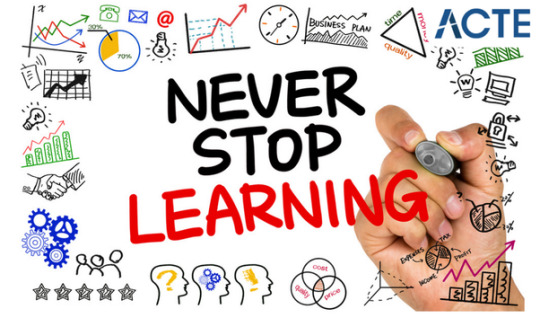
18. Keep Learning
Web design is an ever-evolving field. Stay curious and open to learning new techniques and technologies. Continuous learning will keep your skills sharp and in demand.
19. Consider Professional Training with ACTE Technologies

ACTE Technologies takes pride in its highly skilled trainers, who bring extensive industry experience to the table, ensuring you receive exceptional education and guidance. Moreover, ACTE Technologies frequently facilitates internships and job placements, providing opportunities to apply your web design skills in practical scenarios.
By choosing ACTE Technologies, you’ll not only establish a strong foundation in Web Design Couse but also gain access to a network of professionals and resources that can bolster your career aspirations.
Starting with the fundamentals and progressively advancing your skills is the key to success in web design. Keep in mind that patience and practice are your allies on this journey. As you become more proficient, you’ll possess the creative ability to bring your web design visions to life. So, roll up your sleeves, open your preferred code editor, and let your web design adventure
1 note
·
View note
Text
How to Begin Your Web Design Journey: A Step-by-Step Guide in Simple Terms

Understanding the Basics:
Learn about HTML, which is like a web page’s skeleton.
Understand CSS, which is like makeup for web pages.
Know how to make websites look good on different screens.
2. Choose your tools:
Start with simple text editors like Notepad (for Windows) or TextEdit (for Mac).
Later, try fancier editors like Visual Studio Code.
For making pictures, try Adobe Photoshop or Illustrator.
3. Learn HTML and CSS:
Use websites like W3Schools or Codecademy.
If you want to learn more about web design with certification and placement, ACTE Institute offers comprehensive machine learning training courses that can give you the knowledge and skills necessary to excel in this field. Consider the infinite possibilities for data analysis, automation, and decision-making that machine learning may create.
YouTube: There are many video tutorials covering HTML and CSS for beginners.
They teach you how to make web pages and make them look nice.
You can also learn from courses on Coursera or edX.
4. Practice your skills.
Besides learning, make simple web pages to get better.
Try harder projects as you get more confident.
Make your own website to practice lots.
5. Responsive Web Design:
Make sure your websites work well on phones and computers.
Learn about media queries (they help your design fit different screens).
6. Master CSS Layouts:
Get really good at arranging web stuff using CSS (like making boxes and arranging them nicely).
7. Web Design Frameworks:
Think about using ready-made kits like Bootstrap.
They have pre-made pieces to help you design faster.
8. UI/UX Design:
Learn to make websites easy to use and nice to look at.
Think about how people will use your site.
9. Web Hosting and Domain:
To show your website to people, you need a place to put it (hosting) and a name for it (domain).
Lots of companies can help with this, like Bluehost or HostGator.
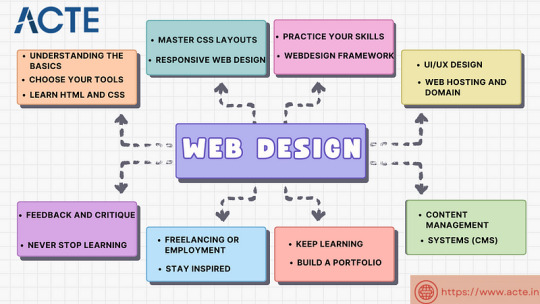
10. Content Management Systems (CMS):
Consider using tools like WordPress to manage your website easily.
11. Keep Learning:
Web design keeps changing, so keep learning new stuff.
Read blogs, watch webinars, and take more advanced classes.
12. Build a portfolio.
Make a collection of your best work to show others.
People who might hire you want to see what you can do.
13. Freelancing or employment:
Decide if you want to work alone or with a company.
Both ways have good things and not-so-good things, so pick what you like.
14. Networking:
Join groups of web designers to meet others like you.
Learning from others can help you become better.
15. Feedback and criticism:
Don’t be shy to ask for advice on your work.
When people give you tips, it helps you improve.
16. Launch your projects:
When you’re good enough, work on real websites.
Offer to make websites for friends or local businesses.
17. Stay Inspired:
Be creative and get ideas from different places.
Nature, art, and other designers can help you think of cool stuff.
18. Never Stop Learning:
Web design always changes, so keep learning new things.
Stay curious and open to learning more tricks and tools.
The secret to success in web design is to start with the fundamentals and gradually advance your abilities. Keep in mind that on this trip, patience and practice are the keys to success. As your skills advance, you’ll have the imagination needed to realise your ideas for websites. So put your hands in your pockets, launch your preferred coding editor, and start your web design experience!
3 notes
·
View notes